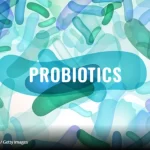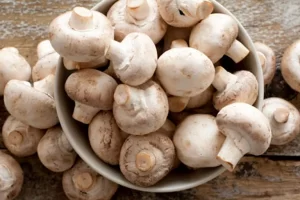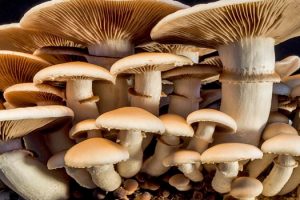As science refers to them correctly, nutrients are compounds such as proteins, fats, carbohydrates, minerals and vitamins present in food; the first three mentioned are consumed to provide energy directly through food. The last two are necessary for various processes such as growth, tissue repair and the maintenance of our body1, among many others. There are different types of nutrients, which serve essential functions in the body.
What are the essential nutrients?
The primary nutrients are carbohydrates, proteins, fats, vitamins and minerals. These can be divided into two categories, macronutrients and micronutrients:
Macronutrients: These are those nutrients provided by food that supplies energy to the body and are required in large quantities to maintain health2. Within this group, we find proteins, fats and carbohydrates3.
Micronutrients: These are nutrients that the body needs in smaller quantities and are essential for the body’s different metabolic processes. They perform essential functions, and within this group, we find vitamins and minerals4.
Nutrients in food
What are the foods that contain nutrients? All foods provide them, but each of them in different proportions. To eat a diet that contains the necessary proportions of nutrients required by our body, we must know each food’s nutrients and combine them to reach the recommended amount that each body needs to function correctly.
Next, we will talk about some foods classified by nutrients that you can include in your diet:
Foods rich in protein: Among these foods, we find products of animal origin, such as dairy products, eggs, fish, red and white meat. Cereals, legumes and oilseeds or nuts are also a source of vegetable-type protein5.
High-fat foods: They provide the body with essential fatty acids divided into unsaturated and saturated. Unsaturated foods include vegetable oils, fatty fish, sunflower seeds, walnuts, peanuts or avocados, and saturated ones such as butter, meat fats, coconut or red palm oils4.
Carbohydrate source foods: Within this group, we mainly find cereals characterized by their main contribution of fibre. Among the cereals we find, for example, quinoa (30 g of quinoa provides approximately 2.1 g of fibre) and oats (30 g of oats provide approximately 3.2 g of fibre to our body), among others, as well as fruits and vegetables.
Foods rich in vitamins and minerals: egg yolk (vitamin A) 11, oats (vitamin B1 or thiamine) 7, spinach and Kiwicha (vitamin C) 7, liver (source of iron), milk (source of calcium), fish ( source of iodine). The group of fruits and vegetables is also rich in vitamins and minerals, depending on their colour. Orange, yellow and red vegetables and fruits, for example, are characterized by being a good source of vitamin A and C, among others. Those green colours contain vitamins A, C, complex B, E and K, and minerals such as magnesium or iron. Likewise, blue, purple or purple colour contains vitamin B complex and some vitamin C, while those of white colour contains vitamins of the B complex and minerals such as potassium12.
Yolanda Pontes, Mª del Carmen Sáez, Ana Celada and Ángela González, pharmacists and members of the Nutrition Group of the Spanish Society of Family and Community Pharmacy (Sefac ), gave a workshop on food in the 5th and 6th-grade classes of various schools in the Community of Madrid within the framework of the I CuídatePlus Educational Program.
A healthy diet is essential for the proper functioning of the body and preventing cardiovascular diseases, obesity and diabetes; specialists remember that nutrients through a good diet are essential to proper growth.
“If a person eats poorly or very little, energy is derived from fats, present in animal and vegetable foods,” they explain. At this point, the specialists recall that “vegetable fats are healthy, for example, those present in nuts, avocado or olives, although except some such as palm oil that can be harmful in excessive amounts.”
How do we get the essential nutrients we need?
Protein
This nutrient is obtained with the intake of meat, fish, lentils, eggs and dairy.
Carbohydrates
They are distinguished between those with slow absorption that allows energy to be released for a longer time and those with rapid absorption. The former is found in bread, cereals, endive, legumes and pasta, while the latter is present in juices, soft drinks and snacks.
Fats
The healthiest are plant origin from foods such as avocado, nuts, seeds, olives and olive oil.
Vitamins
They help regulate the body and are present in vegetables, fruits and milk.
Minerals
Some like calcium are essential for bone growth. Others such as iron can be obtained from plant and animal products, although they are better absorbed from the former.
Fibre
It is only found in plant foods and helps regulate transit and prevent cardiovascular disease.
Water
Eighty percent of the body is made up of water. Therefore, it is advisable to drink between 6 and 8 glasses a day to stay hydrated.
To have a balanced diet, it is necessary to consume from all the food groups, taking into account that half must be fruits and vegetables and, the rest, be divided between proteins, carbohydrates and a minimum part of fats.
Nutrition consists of obtaining the nutrients in food through a set of physical and chemical processes and making them reach all cells to function. Nutrients are chemical compounds contained in the food that provide cells with everything they need to live. Examples: proteins, carbohydrates, lipids.
Nutrients perform three types of functions in cells.
Energetic: they provide energy for cell function. We need energetic nutrients to be able to do all our activities. For example: to walk or run, you have to move your legs, and this is achieved when the cells of some muscles contract, but for this to happen, the muscle cells need energy that they obtain from some nutrients.
Plastic or restorative: they provide the material elements necessary to form the organism’s structure in the growth and renewal of the organism. During the growing season, the size of our body increases a few centimetres a year, and this is only possible if the necessary material is provided so that the cells can divide and increase the number of them. Also, throughout life, cells that die are being replaced, for example, skin cells, red blood cells or cells destroyed in a wound, for which it is essential to provide material to the body.
Regulatory: they control specific chemical reactions that occur in cells. For everything to work well in our body, we need nutrients that make this possible.
Types of nutrients
Nutrients in a plate with grilled salmon There are six types of nutrients:
Carbohydrates, Lipids, Proteins, Vitamins, Water and Mineral salts. Each one fulfills different functions, providing the necessary elements for our cells.
Main functions of each type of nutrient
Carbohydrates (also called Carbohydrates or Sugars) are mainly for energy function. They provide energy to cells.
Lipids: also have a primary energy function (they provide a reserve of energy, carbohydrates will always be used first as an energy supply)
Proteins: primary plastic function. They provide regenerative elements for the cell. Vitamins: regulatory function. They provide elements that regulate the proper functioning of all the elements and processes in the cell.
Sales min rales: regulatory and plastic.
Water has many specific functions.

















Add Comment